#gen f1 stats
Text

Thought I'd take a look at how Gen F1 (as I'm going to call them) is doing compared to one another. Ages 24-27 - many of them competed against each other in karting and/or the feeder series. One of these is not like the others...
Data sources: Stats F1, Wikipedia
#also interesting to see ZHO and MSC with almost identical stats#charles is best of the rest by a decent margin#charles leclerc#pierre gasly#alex albon#esteban ocon#max verstappen#george russell#lance stroll#mick schumacher#zhou guanyu#lando norris#f1 stats#formula 1#f1#gen f1 stats
158 notes
·
View notes
Note
no actually ur so right. as someone who have been in primarily mlm fandom spaces as an afab person the rampant feminization that goes on with charles especially is crazy. ive been pretty public on my dislike of this characterization if charles because of like exactly what you said (which is excluding my own experience being feminized and treated poorly because of my more masculine gender expression). it makes me pretty uncomfortable to see this in specifically fandom spaces and incredibly uncomfortable so see outside if those places.
just to add, im not against feminization (i actually enjoy it a lot when its like niche kink stuff) but the way it is in formula 1 rpf is unlike anything else ive seen in other fandoms.
I agree, it is CRAZY to see how this has somehow become the default characterisation. I agree with your not being against feminisation as an entire concept and when done well it's fun but rather just....why does it seem to be the default? It's bizarre. On a note that I'm sure is entirely unrelated, someone pointed out to me the other day that (although a small valiant group of us are trying to change it) F/M genderbend is far more common than F/F genderbend in F1 RPF....I'm just going to leave that stat there and you can make your own conclusions but considering I got this anon when I posted only F/F Lestappen stuff for a couple of days like two months ago....

Yeah, it's a little disheartening and is part of the reason why I think I'm so anti the feminisation of Charles as a default characterisation. Fanfiction can be whatever you want it to be, but it has always been a queer space but I've seen it time and time again that when a queer ship becomes popular, people are more desperate to consume it within a hetnorm structure. I haven't just seen it with F1 RPF, there's been a big rise of this over the past half a decade or so which I think is due to the consumption of mlm content becoming widely accepted amongst gen z, but in a way that almost straightwashes queer relationships. I remember when RWRB came out and I watched it when I was home for a bit in the summer with a group of girls I knew from high school as part of an effort to be social, and it was so bizarre. Not only did I witness first hand them obsessively rewinding to watch the kiss and the sex scenes, while exclaiming "that's so hot", but they were obsessed with trying to guess which of them would top and which of them would bottom, and for me most damningly, I made a throwaway comment about Uma Thurman in a suit being very hot (tame compared to what they were saying) and I was met with silence and weird sideways looks or a retort of "Alex in a suit is so hot!". It was a little bit of a humbling experience, to see them root for LGBT acceptance for the hot characters on the screen but be blatantly uncomfortable by actual queer expression in their presence.
I'll be honest I've experienced similar things when I talk about F1, and I think that that's because F1 as a fandom space has really exploded in growth in the past couple of years and thus the newer mlm ships within it, especially the popular ones like Carlando and Lestappen, have been subject to this straightwashing more strongly than other older fandom spaces.
As you said I have zero issue with it when it's a conscious choice on the behalf of the creator, but when it becomes the 'norm' within fanon and people complain when roles are reversed, well, it really rubs me the wrong way. I'm interested to hear your continued thoughts if you have them!
#asks#anon#i don't think it's coincidence that the more popular ships have this structure#i think it's why landoscar hasn't managed to match the pace of lestappen yet despite having all the hallmarks of a very successful mlm ship#i think it's harder to feminise one of either oscar or lando in relation to the other#i've often described landoscar as the current dyke ship of choice and i stand by that because a lot of fic FEELS queer#anyway#might get slaughtered for this#don't really care this has been on my mind for a while
19 notes
·
View notes
Note
I've been thinking about watching formula e. What are the best things about it?
Hi I love FE!!! There’s a lot of good primers you can read so I’ll try not to re-tread those and just give my opinion of what I enjoy the most in formula e! I’m literally just getting into it so this is gonna be broad / early impressions!
1. The innovation!
Technology and development is fascinating in F1 but in formula e it’s even MORE compelling to hear about imo because it’s like... in F1, innovation will stay largely within F1! In FE some of this is literally the technology of the future that will one day be adapted into our everyday lives being developed in front of our eyes. Like I am FASCINATED by the flood lights in Diriyah this weekend being powered by vegetable oil!
I started watching season 1 onward to get into FE ahead of this new season and it is just so utterly compelling and fascinating to see how far electric car technology has come in almost 7 years! F1 has been fairly stable for a long time now but watching FE you can see constant growth in its size and capabilities. Like obviously the jump from having to swap cars halfway through the race to only needing one car, but also stuff like the podium ceremony, the structure of a weekend, fan engagement, introducing attack mode! The gen 2 cars look incredible compared to the gen 1 cars! Being able to see how much FE can pull off without aggressively hurting the environment is lowkey inspiring.
2. The chaos!
I think this is a pretty big one for everyone coming into FE from F1 - especially with merc dominance in F1 making it at least SOMEWHAT predictable - but I never have any idea who’s going to win a Formula E race. Pretty much half the grid are Up There at any point, and because the technology is so new the innovation race is extremely tight. Anything can happen, and fan boost / attack mode / the qualifying system only make that more true! I’ve only been watching old races so apologies for the outdated example, but I was watching race 2 of season 2 the other day and like... the third place driver (Robin, my beloved) was basically drifting the car permanently bc the suspension was broken and he had to turn right just to go straight.
That’s another thing, you see a LOT more of the flag warning a driver they have to pit for repairs or they’ll be disqualified in FE. Formula 1 cars break if you sneeze on them, FE cars will hit a wall and keep going.
3. The vibe!
The found family vibe of the grid is so wholesome tbh they’re all quite open and supportive with each other and it’s!!! So nice!!! And then you have drivers like jev who were treated like rubbish in other series that come to FE and really come into their own in a supportive environment. I’ve been watching season 2 and the drivers just chat together and vibe before the podium and give each other hugs before the race and it’s so good??? If you enjoyed Pierre Redemption Arc at Monza then here’s a whole grid of Pierre At Monza for you to love. This is less common now plenty of drivers are just coming into FE like “right what’s all this then” bc it’s established itself as a tight contest in its own right! Which only means the chaos is gonna get even more intense!
Also tho sfdhfsdjhfsd when they Kick Off they Kick Off and it’s so funny they are all so dramatic. If Jev could lean out of the car and slap another driver mid-race he would.
ALSO I mean just, the aesthetic of the cars themselves? FE liveries are diverse and the cars look futuristic as hell. The light up halos and glow in the dark helmets this weekend especially are making me weak.
4. The Locations
FE races almost exclusively on street circuits which means they 1) avoid the environmental costs that come with a purpose built circuit and 2) have some of the most beautiful venues to race in. The scenery in FE is so good at every track!
5. The commentary team!
I literally can’t do this without saying how much I love jack, dario, and nicki they are SUCH a good team. Jack is impartial without being boring and always has a positive stat or fact about any driver and just- jack creates such an insightful, welcoming environment. Also he gets more hyper than a hamster that’s been drinking red bull laced coffee and it’s endearing as fuck.
Dario is an AMAZING co-commentator bc he’s -looks directly at brundle as I say this- a genuinely successful driver who brings that insight in only when it’s relevant or he’s asked about it. He’s also great mainly because he’s hysterical and he balances out Jack’s energy so well. He’s calmer and completely unafraid to say when someone has been a clown. You can sum up dario and jack’s energy best by something that happened in a race I was watching the other day. One of the drivers had a little (literally it was like a tap) contact with another driver. Jack went “oh my goodness!” alarmed as Dario started laughing evilly at them for being clowns.
NICKI is AMAZING she’s such a good interviewer she’s so?? Clever with her questions tbh? I was watching Berlin season 2 the other day and god not only does she always ask the right questions and get a good answer but she’s very good about knowing how much she should/shouldn’t say about what the broadcast has picked up. She’s sneaky she’ll get you in a lie. Also Dario and Nicki’s pit lane looks always slap.
6. The Accessibility
This may vary depending on what country you’re in but for me all old FE races are available to watch on youtube which I think is just AMAZING and what all motorsport should do.
#sorry I just rambled#I could keep going but i'm super overstimulated this afternoon and need to go lay down in a dark room#FE#ask#Anonymous
12 notes
·
View notes
Note
Ok your Analysis on the doc vs king race was fascinating now I what to know who will win in this 3 way race between Chick Hicks and francesco bernoulli and Jackson Storm in the world race from cars 2 no spy villain shenanigans and no other rivals just the three of them I’m so looking forward to your Analysis please take your time with this
Ooooh, thank you for this ask! I’m glad you liked the last one. You can always count on me to nerd out on these sorts of things.
*cracks knuckles* now let’s get down to business
First, a not-so-brief overview of all three characters, and what they have going for and against them.
We’ll start with Chick. The Buick Grand Nationals were sort of the last hurrah when it came to GM building performance cars for several years. They were a hail Mary shot for Buick to try to be cool, and it worked, to everyone’s surprise. The GNX (Grand National Experimental) was actually the fastest American car produced in ‘87, believe it or not. It would have been the fastest in the world had Lamborghini not been doing Lamborghini things. Anywho, Chick’s got a turbocharged 3.8L V-6 engine that realistically puts out close to 300 horsepower. At around 3400 pounds, that’s a little over 11 pounds per horsepower. While not bad, it’s pretty clear the muscle car scene has deteriorated significantly since the 70s. Now, this isn’t necessarily a lot of power, and it’s more than likely the Chick we see in Cars isn’t stock - but for sake of analysis and hypothesizing (and consistency with my previous post) we’ll leave this be. So what else does Chick have going for him? GNXs were pretty competitive road going cars as well. He’s undoubtedly less fragile than Francesco and Storm combined, and with a higher ground clearance, he would handle better on uneven, rough pavement or dirt. But honestly, that’s about it.
Now, Francesco! Let’s base him off of a 2012 F1 Ferrari for comparison’s sake. He’s probably a little older than that, but we don’t know for certain, and it won’t make that big of a difference anyhow. A formula car like him only weighs about 1,400 pounds, and cranks out an insane amount of power. How much you ask? Any guesses? It’s anywhere between 750 and 1,000 horsepower depending on the setup. Let’s be conservative here and say Franny boy has 800 horsepower. That’s less than 2 pounds per horsepower! Thus, as he brags about himself, he can go well over 300 kilometers per hour (right around and over 200 miles per hour for those of us who don’t know how kilometers work). So the numbers don’t lie. Francesco is crazy fast, we know that. He should win easily, yeah? Well, perhaps not. We forget how fragile (pronounced frah-gee-lay) F1 cars are. They’re made completely out of carbon fiber, they’re tiny, and each part is made to do as much as it can while taking up the least amount of space, creating less drag, and weighing less. These cars operate with the bare minimum of equipment they can manage and still hold an edge on performance. One thing they’re not built to do is to stand up to contact. They’re built to be light and go fast. So the first time Francesco hits a pothole or a rock in the dirt? Something’s gonna break. That’s that. He’s out for repairs.
Lastly, but certainly not the least, our boy Jackson Storm. Since Jackson’s a custom next gen build, he has no real life equivalents. So what do we know? He’s super aerodynamic. He can reach speeds of over 210 miles per hour on a super speedway. He trains like an obsessive video gamer. He’s the new standard for racing at the Piston Cup level. So, let’s compare a couple of his stats to the modern NASCAR cup cars. We’re looking at about 725 horsepower (unrestricted) and 3,400 pounds (and honestly, he’s probably more impressive than this, but again, conservatism at work here). That’s a little less than 5 horsepower per pound. Pretty good, right? That’s less than half of what Chick has to tote around, and not all that much more than Francesco. Now, Jackson doesn’t have much ground clearance at all. He’s meant to drive on pavement and stick to it, not to go over rough surfaces. He’s got that going against him, much like Francesco.
So putting this all together for a final analysis! Chick would have the advantage on the dirt. He’s got the ground clearance the other two don’t have, and I’d bet money he’s got a little experience as well. He’s old, he’s had to work hard and climb the ranks to get to the Piston Cup level, and a lot of the little leagues are run on dirt by default. He might not like it, but he can race on dirt. While the other two racers would let their raw speed get in the way and increase their likelihood of losing control on dirt, Chick’s got the right amount of power to deal with the situation.
That’s where Chick’s advantages end, however. He’s hopelessly outpowered on asphalt. He weighs too much and handles too poorly to be any good on the road courses. This is where Francesco and Storm would shine. Francesco, of course, is the master of road courses. All Jackson can do is drive in circles, right?
Well, not really. We forget so soon that Jackson is the master simulator trainee. He’s practiced and practiced and practiced. He knows the courses by heart. Think about when Francesco raced Lightning. Francesco fell way behind in the dirt while Lightning sailed through, but Francesco still caught up. Yet, Lightning still managed to win in Porta Corsa. Lightning was fast enough to beat Francesco in a well run race. Storm might not have the experience on dirt that Lightning had, but he is faster. And he’s less fragile than Francesco. This is key. Francesco has to be careful going through the dirt if he’s to have any hope of finishing the race and winning. This slows him down. Now, Jackson might suck driving on dirt, but he can go faster. He’s no tank by any means, but he can take a little abuse and not have it affect his performance. He’s not gonna shatter into a hundred pieces like Francesco would at any little obstacle. This’ll give him a lead coming out of the dirt, and top that with a higher top speed and an ability to hold a line on a complicated course, and that puts Jackson Storm at an advantage over ol’ Francesco. Speed can’t overcome all, much to Francesco’s disappointment.
TL;DR - Jackson Storm is here to ruin everyone’s day.
48 notes
·
View notes
Text
What It’s Like to Drive the 2016 Chevrolet Camaro
New Post has been published on https://coolcarsnews.com/what-its-like-to-drive-the-2016-chevrolet-camaro/
What It’s Like to Drive the 2016 Chevrolet Camaro

We plead guilty. When we saw the first spy shots of the sixth-gen 2016 Camaro we thought that it looked like a squished fifth gen. In reality, the sixth gen is a completely new car with very little in common with the fifth generation Camaro. Yea, much of the overall fifth-gen styling and basic shape is evident, but this car is built on the much improved Alpha architecture. In fact, only two parts carry over from the fifth-generation Camaro, the Bow Tie emblem on the back and the SS badge. The rest is “new and improved”.
“Alpha provided a strong foundation, but more than 70 percent of the components are unique to the Gen 6 Camaro, including exterior and interior dimensions, an all-new interior, front and rear suspension, and powertrain components. The minute you see – and hear – the Gen 6, you know it’s a Camaro, from the stance to the driving experience to the sound of the Small Block V-8,” said Mark Reuss, GM executive vice president, Global Product Development. Even the LT1 engine is 20 percent different than what’s found in the Corvette.
By going to the Alpha platform GM was also able to knock some serious pounds off the Camaro. Even the 2.0L turbo, which we found odd at first, packs some decent performance. In fact, at 275 hp it matches the output from a 1993-1995 Camaro Z28 with a 5.7L V-8. It also has comparable acceleration performance. A lot of that has to do with the fact that they shaved 390 pounds from the 2.0L turbo model compared to a 2015 V6. The SS drops 223 pounds while picking up an additional 29 horsepower. That’s a 14 percent improvement in its power-to-weight ratio. All very good news indeed.


Driving the 2016 Camaro
But let’s be honest, all the stats in the world don’t matter a bit. What’s important is how the car drives and performs. We were invited to drive the new Camaro on the second leg of Chevrolet’s epic Find New Roads (#findnewroads) event. This is a series of drives, over the course of four weeks, where the Camaros will traverse all 48 contiguous states. We showed up in Syracuse New York, were handed the keys to a new 2SS 2016 Camaro, and told to show up in Boston Massachusetts sometime the next day. Hey, it’s a tough job, but somebody had to do it.
The first thing you notice when driving the new Camaro is how solid it feels, even more so than the fifth gen. According to GM, it’s 30-percent stiffer and after a few miles we believe it. We’ve driven the 2015 Corvette and this has that same high quality feel to it. We put over 500 miles on the 2016 and have to say it’s just a pleasure to drive and always feels connected to the road, without being harsh. The electric power steering system provides just the right amount of assist based on car speed and the transmission gearing felt perfect for the power band of the direct-injected LT1 powerplant. We were happy to score the six-speed manual, but there’s an 8-speed automatic that turns in faster quarter mile times (12.5 seconds for the LT1, 13.7 seconds for the V-6, and 14 flat for the 2.0L turbo).
The interior is also hugely improved over the fifth generation. Like the new C7 Corvette the Camaro has a customizable LCD dash. This, along with various settings for the suspension, makes it easy to set the car up completely different for the street and track. We did most of our driving in Sport Mode, but there’s also a softer ride to be had in Touring Mode and a more aggressive Track Mode. There’s even a setting for snow and ice.
We had some rain, but braking from the Eagle F1 Asymmetric 3 run-flat tires and Brembo brakes were excellent, even in the wet. The binders were not grabby or vague, but could best be described as confidence inspiring. GM touts a stopping distance of 117 feet from 60-mph.
The Camaro felt agile and was every bit as much fun to drive as the 2015 Corvette Stingray, plus you get a backseat as a bonus. For the first time the Camaro SS is available with Magnetic Ride Control, which reads the road and driver inputs 1,000 times per second while adjusting the dampers. Every twisty road we tackled was a blast and the Camaro never once felt squirrely or on edge. We’re dying to get it on a road course to see how it all works at higher speeds, but for street driving it’s more than capable.
The Camaro is also very quiet, with little wind noise. Which, might be why we noticed one of our few complaints; road noise from the Goodyear tires. It wasn’t a lot, but with everything else so quiet it stood out quite a bit. At idle and acceleration the engine noise is great, but thanks to the enhanced dual-mode exhaust system it’s very quiet when cruising. The exhaust is even tunable with standard, stealth, and track modes.
GM told us that the body design spent 350 hours in the wind tunnel getting refined. “The importance of aerodynamics increases exponentially as we increase vehicle performance,” said Kirk Bennion, Exterior Design manager. “As engine output increases, we need more engine cooling. As acceleration and top speeds climb, we need to reduce lift for better high-speed stability. However, we cannot make any changes at the expense of increasing drag, which can hurt fuel economy. To balance these different aerodynamic targets, we tested literally hundreds of changes on the new Camaro, millimeters at a time.” For example, the lower grille bars were to be set at a 20 degree angle to the horizon. But, after testing, the team found they could improve engine-cooling by 1-percent by changing the angle to 13 degrees. To ditch lift they added a flush belly pan instead of the traditional front air dam. This pan, paired with “spats” forward of the front tires, helps reduce total lift by 30 percent while also reducing drag. We were driving on public roads, but the Camaro felt just as rock-steady at speed as it did cruising through a parking lot.
Cruising the back roads and highways was great, but we also wanted to see how it did in city driving so we drove into downtown Boston at rush hour. The clutch was easy on the legs and worked well to get the car moving in stop and go traffic. We really appreciated the hill-assist mode when having to negotiate any less-than-level roads. Like the fifth-gen, the 2016 has that high beltline, and short window we’ve never fallen in love with.
But, the days of putting your elbow on the edge of modern cars doors are long gone. The short windows give that “gun slit” view much like the 2010 Camaro. However, GM added a lot of tech to help make up for the blind spots. Front and rear parking sensors work with a rear mounted high-definition color camera to make parking and maneuvering in tight spaces easier. Lane assist, mounted in the side view mirrors, helps catch cars hiding in the blind spots. To be honest, after 500 miles of driving, we were pretty comfortable with the window arrangement.
Much of our driving was “spirited” so the 500 miles we rolled onto the odometer cost us almost two full tanks of gas. But, to be honest, if you’re driving an SS Camaro, is MPG really your biggest concern?
Overall we liked the 2016 SS Camaro much more now than before we drove it. The improvements to the car are readily apparent and we’re confident the Camaro is evolving in the right direction and no longer feels like the car you settled for because you couldn’t afford a Corvette. Now to start bugging them about some track time.
.heading color:#ffffff;font:bold 16px open sans,arial,helvetica;background-color:#90121d;
.section color:#000000;font:bold 12px open sans,arial,helvetica;background-color:#bbbbbb;
.data color:#000000;font:12px open sans,arial,helvetica;background-color:#FFFFFF;
Size Comparison 2016 Camaro 2015 Camaro Length (in /mm): 188.3/ 4784 190.6 / 4841 Width (in / mm): 74.7 / 1897 75.5 / 1917 Height (in / mm): 53.1 / 1348 54.2 / 1376 Wheelbase (in / mm): 110.7/ 2811 112.3 / 2852 Front track (in/mm): 63 / 1601 (SS) 63.6 / 1616 (SS) Rear track (in/mm): 62.9 / 1598 (SS) 63.9 / 1622 (SS)

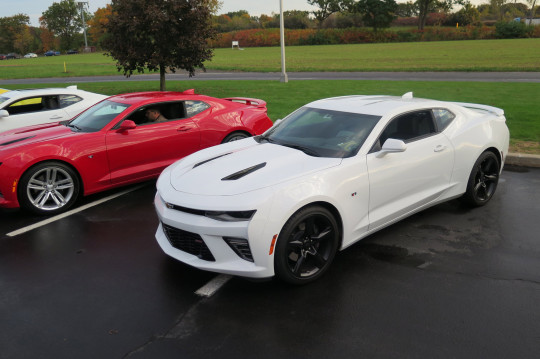

















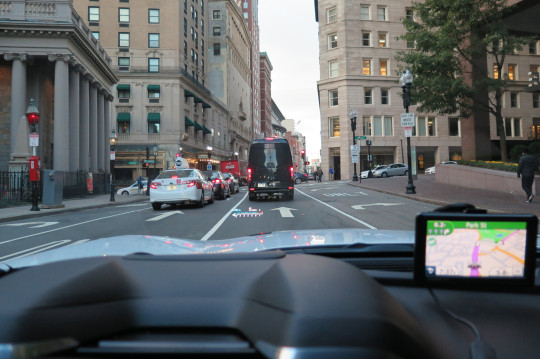






The post What It’s Like to Drive the 2016 Chevrolet Camaro appeared first on Hot Rod Network.
0 notes
Text
can performance boosts deliver 60fps on all consoles? • Eurogamer.net
The Formula 1 series has gone from strength to strength with each year. From the work developer Codemasters puts into its sublime HDR and volumetric lights in the most recent instalments to the new team-building career mode of F1 2020, there’s always a forward step. What isn’t so widely explained about 2020 though is the technical upgrades: to the tracks, the cars and the Ego engine powering it all. The good news is that beyond the graphical changes this time around, performance is unquestionably superior in this year’s edition – but does it come with a cost?
At least looking at the base rendering stats, it doesn’t appear to be the case. All of the pixel counts of last year are left as-is essentially, though digging into the PC version gives some idea of how the options work on the consoles. Xbox One, for example, is arguably the most fascinating; it’s using a 1080p target, but with heavy reconstruction to achieve it. As a result you get checkerboard artefacts on any movement. It’s easy to pick out in stills, though in fairness, those artefacts blend nicely with a temporal anti-aliasing pass that cleans it up in motion. The combination of checkerboarding and TAA is a big feature on PC too; a real performance saver if you need it, with dynamic resolution options opening up for it in a greyed sub-menu. It even lets you pick the frame-rate target – 30, 60 and beyond, plus the aggressiveness of the scaling. It’s really impressive stuff, and I’d expect these settings are used behind the scenes on the console builds too.
It’s a challenge to pinpoint the lowest resolution figure on Xbox One, but for context, PC lets you drop it to 50 per cent scale of the target. That’s an extreme measure, but would give the engine flexibility to adjust for 19 AI cars, heavy rain and complex tracks like Monaco. What’s also clear is that base Xbox One relies heavily on this reconstruction – more so than any other version – whereas the other consoles barely show the same artefacts, including the base PS4. Sony’s machine pushes a 1080p target just like last year, but with far less visible noise around edges on motion, suggesting it hits 1080p natively more often. Otherwise Xbox One X is again a 3840×2160 target image with potentially a minimal use of reconstruction to get there. PS4 Pro is very similar to the X rendition, though the max resolution sits at 3200×1800.
To see this content please enable targeting cookies.
Manage cookie settings
F1 2020 – a look at all console versions of the game, stacked with comparisons to the PC version, and a look at enhancements over last year’s offering.
The resolution setup stays much the same as the 2019 edition but what’s most curious is the visual tweaks. There are optimisations made all round, even extending to the PC edition. Taking the detail-rich Monaco circuit as an example, trees are completely redesigned, looking somewhat less complex – even on Xbox One X and PC at max settings. On the base Xbox, LOD tweaks are evident to buildings in the far distance, while curiously, the screen-space reflection model is updated and actually improved. On the other circuits, the assets are less widely updated, but still touched upon. Foliage changes are in place – bizarrely, the intensity of volumetric lights is dialled back a little for night racing, just in terms of brightness. The result is a game that largely retains the look of its predecessors, but with clear optimisations under the hood to improve the way it scales to less powerful machines. Thankfully this isn’t a drop in AI cars to suit the CPU limits of those base consoles – the changes are subtle, purely visual, but do have an impact on performance.
There’s closer look at the knock-on to frame-rate in the embedded video above but the bottom line is that the F1 series is dynamic in terms of visible cars, circuit complexity and weather conditions – and that could cause problems as the potential rendering challenges stack up. Even on a ‘lighter’ track, adding heavy rain into the mix could see Xbox One and even PS4 Pro struggling to hit the target 60fps, the end result being visible stutter and tearing.
Codemasters’ optimisation push goes a long way in addressing this in F1 2020 and while the read-out isn’t completely solid (there are still some dips into the high 50s), it’s a clear and noticeable improvement. Tearing is less abundant and as far as the base consoles go, it’s great to see Codemasters put the time into fine-tuning the engine. It’s not a uniform upgrade across the game, and the starting grid is still a trouble spot, but it’s noticeably better.
A set of tweaks and changes are made to F1 2020’s visuals on all platforms. Here’s base Xbox One in example – where tree assets are replaced, building LODs altered, and reflections are added at range.
All visual changes apply during races too. Base Xbox One retains its 1080p target, using reconstruction, but all round frame-rates are improved, resulting in less tearing.
Night racing also sees a slight drop in brightness to volumetric lights. Assets are altered here too, notably on trees – but much else stays the same.
A comparison between the extremes: Xbox One at a target 1080p, and Xbox One X with its push for 4K. Texture detail is boosted on the enhanced machine, which also sees further shadow draw.
Both Xbox platforms use the same number of cars on track, with a common baseline for reflections on rain-soaked circuits.
Curiously shadows appear more diffused on Xbox One X, though overall there’s a huge uptick in visual quality.
Looking at the base consoles, PS4 still delivers a cleaner image and more sustained performance, but the gap has narrowed and the Xbox One version is still a great game to play. It’s all positive for the base machines, whereas the enhanced consoles generally stay as they were in the frame-rate stakes. 60fps was easily achieved on both PS4 Pro and Xbox One X last year – with a few exceptions on Pro involving the heavy rain setting. Looking at these points in F1 2020, there’s barely a single drop under that number now. In cases where it does, the screen-tearing kicks in to avoid noticeable stutter. All round, these two versions were the least in need of improvement, though it’s curious to see that the tweaked foliage of the base machines is kept. For the most watertight experience I’d still back Xbox One X for its avoidance of any drops in the face of too many cars on-screen, but you can’t really go wrong with either.
There are plenty of other benefits to playing on Pro or X. A direct comparison between Xbox One consoles bears this out as we look at the extreme ends of the current-gen console power ladder. You’ll enjoy higher resolution textures on par with PC’s top preset. There’s better draw distance on shadows, plus road markings – which makes sense given the higher resolution window. On top of that there’s fuller plantlife on the roadsides of tracks like Zandvoort – a small embellishment that bulks them out with more leaves. All of this tends to just whip by during a race. It’s only during intro fly-bys that any of these details hold muster. Bizarrely, shadows do appear more diffused on Xbox One X – softer, at least at range. Still the biggest divide during a race remains the resolution side; a 1080p picture achieved through checkerboarding on left, versus a 4K target on right. As you might expect, PS4 Pro is essentially identical to Xbox One X in terms of features – it’s just moves its target to 1800p instead.
The technical evolution of the F1 series is a steady one but it shows that Codemasters is still committed to giving current-gen machines a priority and the series is now better-performing than ever before, which some might say is the most important part of any racing package. There’s no sign just yet of where the team intends to go for the series’ transition to next-gen consoles. Will Codemasters aim for a 120fps performance mode as the firm has promised for Dirt 5? Will we see 4K at 60fps with ray tracing, as revealed in Gran Turismo 7 on PlayStation 5? It would be great to see similar strides from Codemasters, but in the here and now, as a swansong of sorts for the current generation, F1 2020 sees the studio deliver the best iteration of the game yet.
from EnterGamingXP https://entergamingxp.com/2020/07/can-performance-boosts-deliver-60fps-on-all-consoles-%e2%80%a2-eurogamer-net/?utm_source=rss&utm_medium=rss&utm_campaign=can-performance-boosts-deliver-60fps-on-all-consoles-%25e2%2580%25a2-eurogamer-net
0 notes
Text
WRC 8 – Review
Rally Turkey is the racing game equivalent to a Souls-like level. Its steep difficulty curve from a wide track start line to the smallest roads with rocks everywhere as your red-white machine barrels towards the finish is something to behold. And then it starts to rain…
WRC 8 is BigBen and Kylotonn’s master-craft after a two-year hiatus and the work that they have stride for most definitely can be seen throughout this game.
So the question lies, how does it stand when compared to it’s closest rival? Quite close, really.
Presentation
The main attraction for this year’s WRC game is their new extensive career mode. This starts by asking if you want to enable Permadeath mode (known as Permacrash for racing game reason) and I roll with that.
It takes a more interesting approach that’s similar to Codemaster’s F1 games where you can sign for a team and built their stats towards your liking.
Perhaps you want your damage cost to reduce, you can invest in the Crew tree to do that or you want to not fly off the road too much, invest in better suspension within the car section.
These types of selections could tailor players towards their own choices in their playthrough and is handled quite well. You can even hire/fire crew members in your pursuit of rallying dominance.
But, the meat and potatoes of this game are of course the cars and it’s various stages. The graphics have been improved greatly from this department, with cars now sounding visceral and the stages, when covered in rain, snow, and fog. Deadly yet beautiful as you visit the official stages of the series within the main series and their junior categories like Turkey, Wales, and Germany.
But my only gripe is that the game is running in 30fps on consoles, a small matter as it is a solid framerate throughout the game but could be improved upon for next-gen.
Gameplay
A racing game’s core is definitely the handling model and it’s fair to say that WRC’s 2 years hiatus has paid dividends. The handling model is now quite enjoyable to drive around compared to its last few counterparts and could say the handling rivals the likes of Dirt 4’s version of Sim handling but is more enjoyable on a controller than the latter.
The damage model has been tweaked to be more realistic as well so you might see yourself having to stop to change tires once or twice if you play on Permacrash mode.
Another cool feature is the game’s dynamic weather, where any stages the further you go in the career mode (or setting it yourself!) could lead you to be sliding across roads as the gravel/mud/snow could be paved in rainwater or engulfed in fog. A neat touch towards having a more realistic experience as you really can’t see anything.
But one thing that still feels could be improved upon in the next installment (perhaps in the Next Gen) is a new co-driver voice. I feel that the co-driver (at least for the English version) is quite robotic and at times, stiff, and due to this, I might have missed a few road calls that lead to a Skoda barreling down a cliff because I didn’t hear a “Keep middle”.
A newer co-driver or even a new female voice ala Dirt series could make it better.
Content
Besides career mode, the other modes aren’t quite as enjoyable to play, with the multiplayer being a bit barren when I was testing it and two-player mode is more fun than MP due to the insanity of doing a stage with extreme weather is, of course, extreme fun.
But I believe that the quite in-depth career mode could see players play longer than expected.
And, for our Malaysian readers: The Proton Iriz R5 is hecking fun to drive.
Personal Enjoyment
WRC 8 is one of those racing games that I could see myself replaying lots of time and since my last time playing this series was back in 2012 on a 360 pad, I could feel the difference straight away after not coming back for 7 years.
The newer WRC cars, which include WRC2 Junior and Pro series that handles differently and with better stage designs, it was nice to return back to something fun again.
Verdict
WRC 8 is the definitive edition for the series so far, with its new addition that helps it bridge the gap towards its main rival. It’s perhaps the rally game you could pick up if you want a change of (fast) pace.
Review is based on the version 1.03 and played on a PlayStation 4 Slim. Review copy provided by BigBen Interactive
WRC 8 – Review published first on https://touchgen.tumblr.com/
0 notes
Text
Some pics from my sixth year of daily-driving the NSX via /r/cars
Some pics from my sixth year of daily-driving the NSX
I have been daily-driving my 1995 NSX for about six years, starting in the Washington DC area, then in Honolulu, and now in southern California. Like my previous posts (Year 5 | Year 4 | Year 3 | Year 2 | Year 1) here are some highlights.
Looking back, it was a pretty chill year and I didn’t do nearly as many long drives or epic road trips. Mostly day-to-day stuff.
There is some pretty awesome stuff in our area though.
Got to go see the Mars InSight landing at NASA JPL although there was no way I could get my personal spaceship close enough for a picture with anything that could actually go to space.
Lots of local drives. It is pretty fucking cool that Angeles Crest is just another local drive, and I enjoy showing friends from out of town some of the side routes.
Kinda the birthplace of the NSX design. Ken Okuyama, who designed the Pininfarina HP-X concept which would become the NSX graduated from the ArtCenter College of Design (although that design would be finished up in-house by Masahito Nakano). Incidentally, the designer for the second-gen NSX, Michelle Christensen, is also an ACCD alum
Oh yeah and of course the city of Los Angeles itself has quite a lot to offer, like the Petersen Automotive Museum which I think is proof positive that this is probably the best car city in the world.
The year started pretty cold and wet, which is pretty rare in SoCal.
It really makes for the best pics though, as long as you can stay dry.
Because it rains so infrequently, I really appreciate shots like this.
And cozy moments.
Although muddy roads ruin your drive on the way to photo shoots.
The best thing about the geography though is that we still have seasons, but we can just go visit them instead of having to live in it.
When things dried out a bit:
Took the NSX out to the track Chuckwalla Raceway, actually.
Did some maintenance and clean-up still no garage of my own
More regular maintenance, just throwing money at the car
Some detailing/clean-up at IKEA (which has great lighting in the parking structure if you don’t have a garage)
Installed some parts, finally (these taillights were sitting since Hawai’i).
All that work just for Costco hahaha
I did some car meets and events as usual, but also not as many as last year. The main ones for me were:
the Acura Grand Prix of Long Beach (first year of Acura taking over from Toyota as title sponsor. This was my first Indycar race also and it was a good complement to my usual F1 trips.
and of course NSXPO, which was in San Francisco this year.
Because this NSXPO was a lot closer than most of the other ones I’ve gone to, I consider this the primary culprit for my relatively short drives this year haha
Here is my own NSX with the very first NSX I sat in. I had just started college at the time, driving an Acura Legend sedan, and there wasn’t anyone local to me who I could join for drives. This guy invited me to join on his runs up the area’s mountains and canyons and it made a huge impression on me as a car enthusiast.
Speaking of that car, here it is: KA7 Acura Legend. I’ve mentioned it in other posts but this year was ‘official’: we gave up the car and it is no longer in my family’s possession so I did that ceremonial last drive. It was a good long journey.
Some stats from the year:
23.2 average MPG (0.5 MPG worse than last year)
35.2 highest MPG (7.0 MPG better than last year)
19.5 lowest MPG (0.7 MPG worse than last year)
49.73 miles per day
One of my latest pics and a mileage update. Hope you enjoyed the pics; I took most of them myself using a phone and I try to be fairly active on Instagram (@nsxlife) as well.
Credit to @bap_SD for this pic, @jpeg.luis for these two pictures and @caliphotovideo for this screencap I took off of a video.
0 notes
Text
What It’s Like to Drive the 2016 Chevrolet Camaro
New Post has been published on https://coolcarsnews.com/what-its-like-to-drive-the-2016-chevrolet-camaro/
What It’s Like to Drive the 2016 Chevrolet Camaro

We plead guilty. When we saw the first spy shots of the sixth-gen 2016 Camaro we thought that it looked like a squished fifth gen. In reality, the sixth gen is a completely new car with very little in common with the fifth generation Camaro. Yea, much of the overall fifth-gen styling and basic shape is evident, but this car is built on the much improved Alpha architecture. In fact, only two parts carry over from the fifth-generation Camaro, the Bow Tie emblem on the back and the SS badge. The rest is “new and improved”.
“Alpha provided a strong foundation, but more than 70 percent of the components are unique to the Gen 6 Camaro, including exterior and interior dimensions, an all-new interior, front and rear suspension, and powertrain components. The minute you see – and hear – the Gen 6, you know it’s a Camaro, from the stance to the driving experience to the sound of the Small Block V-8,” said Mark Reuss, GM executive vice president, Global Product Development. Even the LT1 engine is 20 percent different than what’s found in the Corvette.
By going to the Alpha platform GM was also able to knock some serious pounds off the Camaro. Even the 2.0L turbo, which we found odd at first, packs some decent performance. In fact, at 275 hp it matches the output from a 1993-1995 Camaro Z28 with a 5.7L V-8. It also has comparable acceleration performance. A lot of that has to do with the fact that they shaved 390 pounds from the 2.0L turbo model compared to a 2015 V6. The SS drops 223 pounds while picking up an additional 29 horsepower. That’s a 14 percent improvement in its power-to-weight ratio. All very good news indeed.


Driving the 2016 Camaro
But let’s be honest, all the stats in the world don’t matter a bit. What’s important is how the car drives and performs. We were invited to drive the new Camaro on the second leg of Chevrolet’s epic Find New Roads (#findnewroads) event. This is a series of drives, over the course of four weeks, where the Camaros will traverse all 48 contiguous states. We showed up in Syracuse New York, were handed the keys to a new 2SS 2016 Camaro, and told to show up in Boston Massachusetts sometime the next day. Hey, it’s a tough job, but somebody had to do it.
The first thing you notice when driving the new Camaro is how solid it feels, even more so than the fifth gen. According to GM, it’s 30-percent stiffer and after a few miles we believe it. We’ve driven the 2015 Corvette and this has that same high quality feel to it. We put over 500 miles on the 2016 and have to say it’s just a pleasure to drive and always feels connected to the road, without being harsh. The electric power steering system provides just the right amount of assist based on car speed and the transmission gearing felt perfect for the power band of the direct-injected LT1 powerplant. We were happy to score the six-speed manual, but there’s an 8-speed automatic that turns in faster quarter mile times (12.5 seconds for the LT1, 13.7 seconds for the V-6, and 14 flat for the 2.0L turbo).
The interior is also hugely improved over the fifth generation. Like the new C7 Corvette the Camaro has a customizable LCD dash. This, along with various settings for the suspension, makes it easy to set the car up completely different for the street and track. We did most of our driving in Sport Mode, but there’s also a softer ride to be had in Touring Mode and a more aggressive Track Mode. There’s even a setting for snow and ice.
We had some rain, but braking from the Eagle F1 Asymmetric 3 run-flat tires and Brembo brakes were excellent, even in the wet. The binders were not grabby or vague, but could best be described as confidence inspiring. GM touts a stopping distance of 117 feet from 60-mph.
The Camaro felt agile and was every bit as much fun to drive as the 2015 Corvette Stingray, plus you get a backseat as a bonus. For the first time the Camaro SS is available with Magnetic Ride Control, which reads the road and driver inputs 1,000 times per second while adjusting the dampers. Every twisty road we tackled was a blast and the Camaro never once felt squirrely or on edge. We’re dying to get it on a road course to see how it all works at higher speeds, but for street driving it’s more than capable.
The Camaro is also very quiet, with little wind noise. Which, might be why we noticed one of our few complaints; road noise from the Goodyear tires. It wasn’t a lot, but with everything else so quiet it stood out quite a bit. At idle and acceleration the engine noise is great, but thanks to the enhanced dual-mode exhaust system it’s very quiet when cruising. The exhaust is even tunable with standard, stealth, and track modes.
GM told us that the body design spent 350 hours in the wind tunnel getting refined. “The importance of aerodynamics increases exponentially as we increase vehicle performance,” said Kirk Bennion, Exterior Design manager. “As engine output increases, we need more engine cooling. As acceleration and top speeds climb, we need to reduce lift for better high-speed stability. However, we cannot make any changes at the expense of increasing drag, which can hurt fuel economy. To balance these different aerodynamic targets, we tested literally hundreds of changes on the new Camaro, millimeters at a time.” For example, the lower grille bars were to be set at a 20 degree angle to the horizon. But, after testing, the team found they could improve engine-cooling by 1-percent by changing the angle to 13 degrees. To ditch lift they added a flush belly pan instead of the traditional front air dam. This pan, paired with “spats” forward of the front tires, helps reduce total lift by 30 percent while also reducing drag. We were driving on public roads, but the Camaro felt just as rock-steady at speed as it did cruising through a parking lot.
Cruising the back roads and highways was great, but we also wanted to see how it did in city driving so we drove into downtown Boston at rush hour. The clutch was easy on the legs and worked well to get the car moving in stop and go traffic. We really appreciated the hill-assist mode when having to negotiate any less-than-level roads. Like the fifth-gen, the 2016 has that high beltline, and short window we’ve never fallen in love with.
But, the days of putting your elbow on the edge of modern cars doors are long gone. The short windows give that “gun slit” view much like the 2010 Camaro. However, GM added a lot of tech to help make up for the blind spots. Front and rear parking sensors work with a rear mounted high-definition color camera to make parking and maneuvering in tight spaces easier. Lane assist, mounted in the side view mirrors, helps catch cars hiding in the blind spots. To be honest, after 500 miles of driving, we were pretty comfortable with the window arrangement.
Much of our driving was “spirited” so the 500 miles we rolled onto the odometer cost us almost two full tanks of gas. But, to be honest, if you’re driving an SS Camaro, is MPG really your biggest concern?
Overall we liked the 2016 SS Camaro much more now than before we drove it. The improvements to the car are readily apparent and we’re confident the Camaro is evolving in the right direction and no longer feels like the car you settled for because you couldn’t afford a Corvette. Now to start bugging them about some track time.
.heading color:#ffffff;font:bold 16px open sans,arial,helvetica;background-color:#90121d;
.section color:#000000;font:bold 12px open sans,arial,helvetica;background-color:#bbbbbb;
.data color:#000000;font:12px open sans,arial,helvetica;background-color:#FFFFFF;
Size Comparison 2016 Camaro 2015 Camaro Length (in /mm): 188.3/ 4784 190.6 / 4841 Width (in / mm): 74.7 / 1897 75.5 / 1917 Height (in / mm): 53.1 / 1348 54.2 / 1376 Wheelbase (in / mm): 110.7/ 2811 112.3 / 2852 Front track (in/mm): 63 / 1601 (SS) 63.6 / 1616 (SS) Rear track (in/mm): 62.9 / 1598 (SS) 63.9 / 1622 (SS)

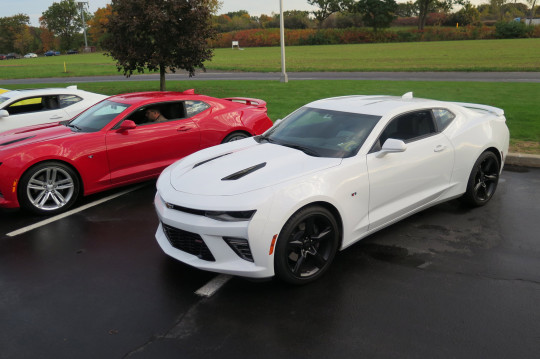





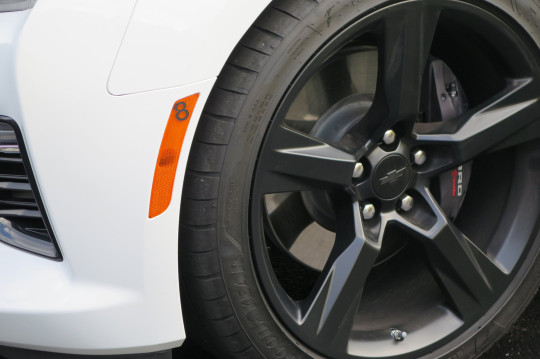

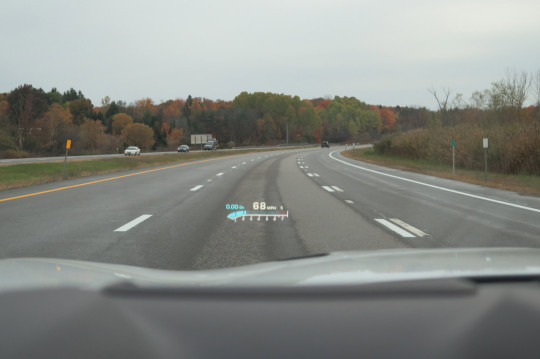







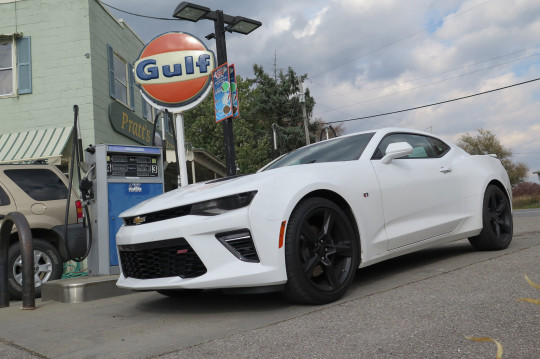







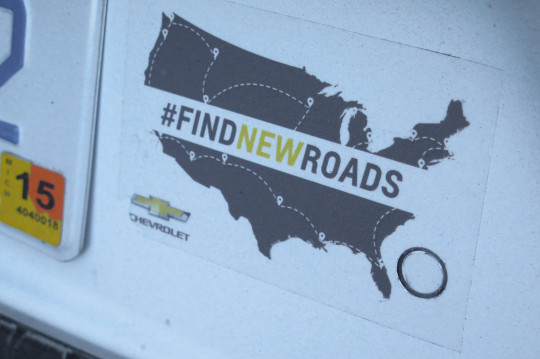
The post What It’s Like to Drive the 2016 Chevrolet Camaro appeared first on Hot Rod Network.
0 notes
Text
What It’s Like to Drive the 2016 Chevrolet Camaro
New Post has been published on https://coolcarsnews.com/2020/12/25/what-its-like-to-drive-the-2016-chevrolet-camaro/
What It’s Like to Drive the 2016 Chevrolet Camaro

We plead guilty. When we saw the first spy shots of the sixth-gen 2016 Camaro we thought that it looked like a squished fifth gen. In reality, the sixth gen is a completely new car with very little in common with the fifth generation Camaro. Yea, much of the overall fifth-gen styling and basic shape is evident, but this car is built on the much improved Alpha architecture. In fact, only two parts carry over from the fifth-generation Camaro, the Bow Tie emblem on the back and the SS badge. The rest is “new and improved”.
“Alpha provided a strong foundation, but more than 70 percent of the components are unique to the Gen 6 Camaro, including exterior and interior dimensions, an all-new interior, front and rear suspension, and powertrain components. The minute you see – and hear – the Gen 6, you know it’s a Camaro, from the stance to the driving experience to the sound of the Small Block V-8,” said Mark Reuss, GM executive vice president, Global Product Development. Even the LT1 engine is 20 percent different than what’s found in the Corvette.
By going to the Alpha platform GM was also able to knock some serious pounds off the Camaro. Even the 2.0L turbo, which we found odd at first, packs some decent performance. In fact, at 275 hp it matches the output from a 1993-1995 Camaro Z28 with a 5.7L V-8. It also has comparable acceleration performance. A lot of that has to do with the fact that they shaved 390 pounds from the 2.0L turbo model compared to a 2015 V6. The SS drops 223 pounds while picking up an additional 29 horsepower. That’s a 14 percent improvement in its power-to-weight ratio. All very good news indeed.


Driving the 2016 Camaro
But let’s be honest, all the stats in the world don’t matter a bit. What’s important is how the car drives and performs. We were invited to drive the new Camaro on the second leg of Chevrolet’s epic Find New Roads (#findnewroads) event. This is a series of drives, over the course of four weeks, where the Camaros will traverse all 48 contiguous states. We showed up in Syracuse New York, were handed the keys to a new 2SS 2016 Camaro, and told to show up in Boston Massachusetts sometime the next day. Hey, it’s a tough job, but somebody had to do it.
The first thing you notice when driving the new Camaro is how solid it feels, even more so than the fifth gen. According to GM, it’s 30-percent stiffer and after a few miles we believe it. We’ve driven the 2015 Corvette and this has that same high quality feel to it. We put over 500 miles on the 2016 and have to say it’s just a pleasure to drive and always feels connected to the road, without being harsh. The electric power steering system provides just the right amount of assist based on car speed and the transmission gearing felt perfect for the power band of the direct-injected LT1 powerplant. We were happy to score the six-speed manual, but there’s an 8-speed automatic that turns in faster quarter mile times (12.5 seconds for the LT1, 13.7 seconds for the V-6, and 14 flat for the 2.0L turbo).
The interior is also hugely improved over the fifth generation. Like the new C7 Corvette the Camaro has a customizable LCD dash. This, along with various settings for the suspension, makes it easy to set the car up completely different for the street and track. We did most of our driving in Sport Mode, but there’s also a softer ride to be had in Touring Mode and a more aggressive Track Mode. There’s even a setting for snow and ice.
We had some rain, but braking from the Eagle F1 Asymmetric 3 run-flat tires and Brembo brakes were excellent, even in the wet. The binders were not grabby or vague, but could best be described as confidence inspiring. GM touts a stopping distance of 117 feet from 60-mph.
The Camaro felt agile and was every bit as much fun to drive as the 2015 Corvette Stingray, plus you get a backseat as a bonus. For the first time the Camaro SS is available with Magnetic Ride Control, which reads the road and driver inputs 1,000 times per second while adjusting the dampers. Every twisty road we tackled was a blast and the Camaro never once felt squirrely or on edge. We’re dying to get it on a road course to see how it all works at higher speeds, but for street driving it’s more than capable.
The Camaro is also very quiet, with little wind noise. Which, might be why we noticed one of our few complaints; road noise from the Goodyear tires. It wasn’t a lot, but with everything else so quiet it stood out quite a bit. At idle and acceleration the engine noise is great, but thanks to the enhanced dual-mode exhaust system it’s very quiet when cruising. The exhaust is even tunable with standard, stealth, and track modes.
GM told us that the body design spent 350 hours in the wind tunnel getting refined. “The importance of aerodynamics increases exponentially as we increase vehicle performance,” said Kirk Bennion, Exterior Design manager. “As engine output increases, we need more engine cooling. As acceleration and top speeds climb, we need to reduce lift for better high-speed stability. However, we cannot make any changes at the expense of increasing drag, which can hurt fuel economy. To balance these different aerodynamic targets, we tested literally hundreds of changes on the new Camaro, millimeters at a time.” For example, the lower grille bars were to be set at a 20 degree angle to the horizon. But, after testing, the team found they could improve engine-cooling by 1-percent by changing the angle to 13 degrees. To ditch lift they added a flush belly pan instead of the traditional front air dam. This pan, paired with “spats” forward of the front tires, helps reduce total lift by 30 percent while also reducing drag. We were driving on public roads, but the Camaro felt just as rock-steady at speed as it did cruising through a parking lot.
Cruising the back roads and highways was great, but we also wanted to see how it did in city driving so we drove into downtown Boston at rush hour. The clutch was easy on the legs and worked well to get the car moving in stop and go traffic. We really appreciated the hill-assist mode when having to negotiate any less-than-level roads. Like the fifth-gen, the 2016 has that high beltline, and short window we’ve never fallen in love with.
But, the days of putting your elbow on the edge of modern cars doors are long gone. The short windows give that “gun slit” view much like the 2010 Camaro. However, GM added a lot of tech to help make up for the blind spots. Front and rear parking sensors work with a rear mounted high-definition color camera to make parking and maneuvering in tight spaces easier. Lane assist, mounted in the side view mirrors, helps catch cars hiding in the blind spots. To be honest, after 500 miles of driving, we were pretty comfortable with the window arrangement.
Much of our driving was “spirited” so the 500 miles we rolled onto the odometer cost us almost two full tanks of gas. But, to be honest, if you’re driving an SS Camaro, is MPG really your biggest concern?
Overall we liked the 2016 SS Camaro much more now than before we drove it. The improvements to the car are readily apparent and we’re confident the Camaro is evolving in the right direction and no longer feels like the car you settled for because you couldn’t afford a Corvette. Now to start bugging them about some track time.
.heading color:#ffffff;font:bold 16px open sans,arial,helvetica;background-color:#90121d;
.section color:#000000;font:bold 12px open sans,arial,helvetica;background-color:#bbbbbb;
.data color:#000000;font:12px open sans,arial,helvetica;background-color:#FFFFFF;
Size Comparison 2016 Camaro 2015 Camaro Length (in /mm): 188.3/ 4784 190.6 / 4841 Width (in / mm): 74.7 / 1897 75.5 / 1917 Height (in / mm): 53.1 / 1348 54.2 / 1376 Wheelbase (in / mm): 110.7/ 2811 112.3 / 2852 Front track (in/mm): 63 / 1601 (SS) 63.6 / 1616 (SS) Rear track (in/mm): 62.9 / 1598 (SS) 63.9 / 1622 (SS)









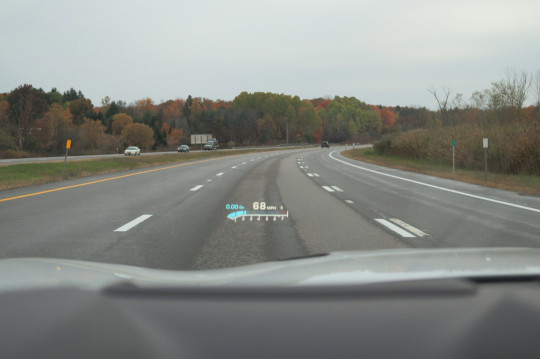



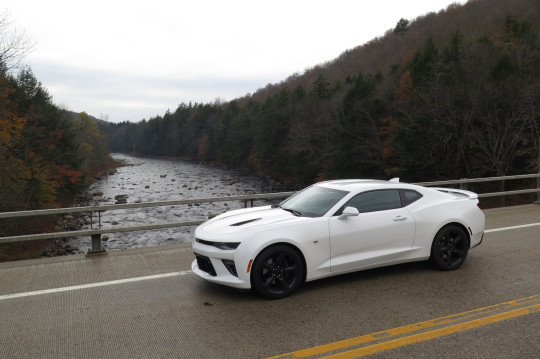





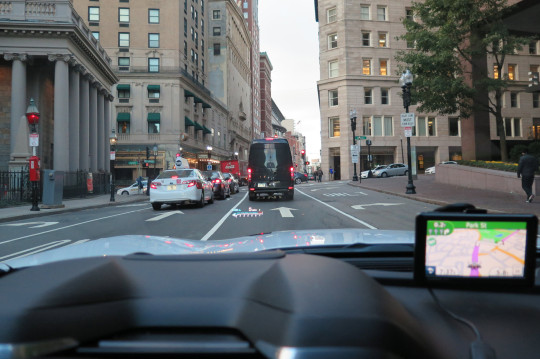





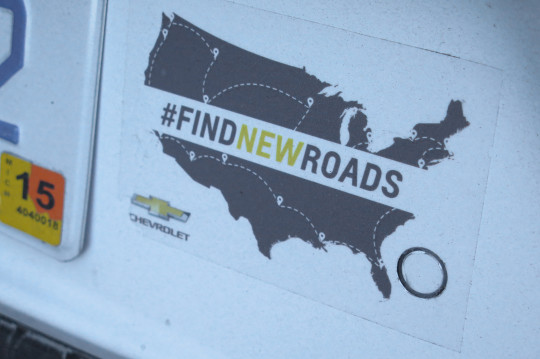
The post What It’s Like to Drive the 2016 Chevrolet Camaro appeared first on Hot Rod Network.
0 notes